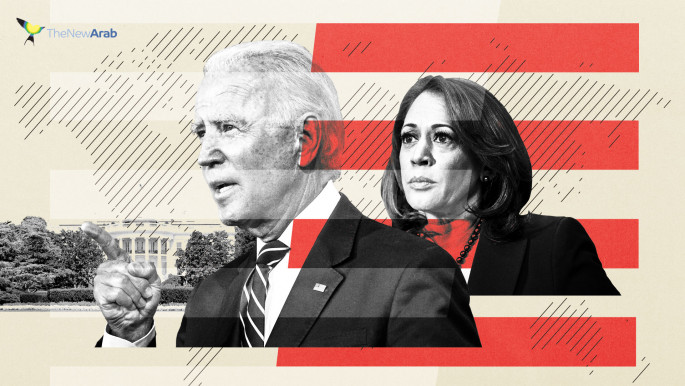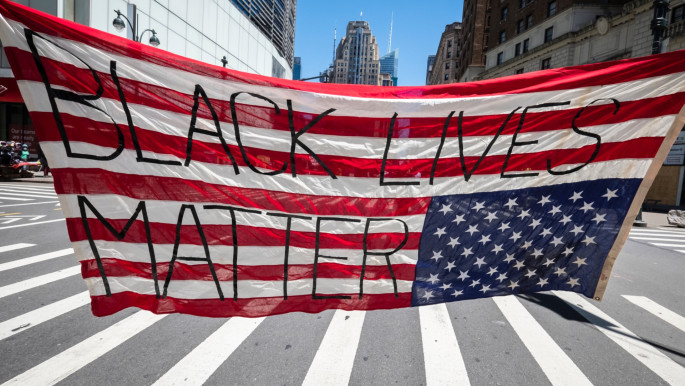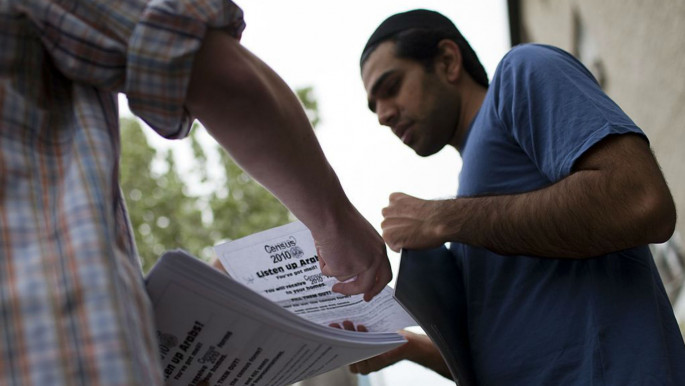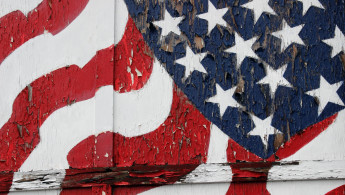The long fight for MENA recognition in the US census
"There has to be a moment you realise you're not treated like everyone else," says Rania Sbaita, a 20-year-old college student from southern California, who has been an outspoken critic of the census' lack of category for those descended from the MENA region.
Why should I classify myself as white if I don't have the privilege of being white? That's the question many Arabs, Iranians, Turks and others of Middle East descent are asking themselves as they complete the 2020 US Census forms, which among other things asks respondents to identify their race.
These categories are important, not only because they can be a determination of federal funding and a metric for economic analysis - but also because of its status as the country's official record of demographics, which is often used as a template for other forms.
Sbaita was recently applying for a minority scholarship, when she noticed there was no category that matched her background. For her, it didn't make sense to apply for a scholarship for minorities and check the white box. When her professor looked into why there was no MENA category, it turned out the form was based on the census. In the end, Sbaita chose Asian, even though that's not how she identifies.
 |
Are people of Middle East and North African origin white? The 2020 US Census, currently under way, says they are |  |
The census also determines the languages that go on ballots. Federal law requires 10,000 people or five percent of the voting age population who speak a language for it to appear on the ballot. This has the potential to affect voter turn-out.
A political decision?
"Ultimately it was a political decision to not include MENA in the 2020 census," says Samer Khalaf, National President of the American-Arab Anti-Discrimination Committee (ADC), noting that the ADC and other groups have been fighting for this right for decades, and they had come closer than ever this time.
 |
|
| Read more: Can a Biden-Harris ticket fix America's broken Middle East policy? |
"How do you decide what you want to call yourselves? We agreed on a compromise of MENA. The Census studied it and put out test questions. It was accepted, and it was a 99 percent done deal," he says.
Since the White House's Office of Management and Budget (OMB) hadn't made a decision (by default letting it expire), the census said it couldn't make an update to its categories, though Khalaf points out that the OMB sets the minimum for the categories, meaning that more could have been added.
"They came up with a pretexted reason: the OMB had not made a decision, and the census was bound by the OMB," says Khalaf.
"We did get a bone thrown to us. They allowed a second question (under white), which also allowed for Arab within the white category," Khalaf says. 'Other' by the rules of the census is not allowed to have subcategories. Arabs who do not wish to classify themselves as white must choose the 'other' category.
"The whole thing has become a way for Trump to game the system," says Khalaf, noting that the census deadline had been extended to the end of October due to the pandemic, but now there's a push to bring it back to the end of September.
 |
The US Census, established in 1790, has undergone a range of developments in its 230-year history |  |
"They're artificially inflating the white category to say: this is still a white country. It's another attempt at keeping a white majority. There's nothing wrong with having a multi-ethnic, multi-racial country. We're a conglomerate of different cultures. It adds to our greatness." Indeed, a representative from the US Census confirms that correct categories are important for upholding civil rights laws.
"We ask about a person's race to create statistics about race and to present other statistics by race groups. The data collected in this question is needed by federal agencies to monitor compliance with anti-discrimination provisions, such as the Voting Rights Act and the Civil Rights Act," says Rashad Al-Dabbagh, a partnership specialist at the Los Angeles Regional Census Center.
An evolution of demographics
The US Census, established in 1790, has undergone a range of developments in its 230-year history. Among them has been the evolution of racial and ethnic categories. The classification of Hispanics, for example, whose ancestries extend to several continents (including Europe and Africa), has been evolving since 1930 (when Mexican was added and then removed as a category). In 1980, an ethnicity option was added for Hispanics to reflect their diversity.
 |
|
| Read more: The role of Black Muslims in America's fight for racial justice |
Despite originating from a geographic area different from European Americans, those who can trace their ancestry to the MENA region have never had their own category in the US Census. This can largely be attributed to decisions made by some of the original immigrants from the region, who chose to identify as white, which afforded them advantages in society.
In 1915, George Dow, a Syrian immigrant, won a lawsuit against the US government for denying his citizenship naturalisation application on the grounds that he was not a requisite "free white person." He would have been prevented from obtaining citizenship due to the 1882 Asian Exclusion Act, however the outcome of the lawsuit set a precedent of including those from a portion of Asia as white.
"They wanted to distance themselves from those who have been marginalised. They were looking for safety. Being white was probably the safest thing," says Hussam Ayloush, Executive Director at the Council on American-Islamic Relations in California.
The majority of the earliest immigrants from the region were Christian, making them generally less susceptible to discrimination due to their names, and making it relatively easier for them to assimilate.
 |
They're artificially inflating the white category to say: this is still a white country. It's another attempt at keeping a white majority |  |
Times have changed. Beginning with the civil rights movement and gaining momentum post-9/11, for Americans of MENA descent, many of whom have been racially profiled at airports, among other places, identifying as white is no longer a given.
Understandably, there has been some concern that openly identifying as a demographic that is under government surveillance could expose an already vulnerable community. Indeed, during World War Two, the US government used the census to locate and incarcerate Japanese-Americans. In the decades since, backed by the courts, the census has consistently upheld the privacy of its respondents, even in cases where data has been requested by the FBI or the president.
However, some advocates of a MENA category are quick to point out that the community is already under government surveillance.
 |
|
| Read more: 'White' minus privilege: 2020 US census erases Middle Easterners, North Africans |
"We're invisible, but we're highly visible," says Evelyn Alsultany, an Associate Professor in the Department of American Studies and Ethnicity at the University of Southern California in Los Angeles, herself of Iraqi and Cuban origin.
Some have also questioned the relevance of the category for those with origins from the region, but who could pass as white. However, as people from different communities (not just from the MENA region) have experienced, one's name, accent and clothing can also be the basis of discrimination.
"If your name is Mohammad and you're white, you're still treated differently," says Sbaita.
Another question that has been raised over the MENA category is the term itself. Should the Middle East, a term with colonial origins, be used for the very people who are trying to be heard in a society where they are marginalised?
An alternative sometimes put forward is SWANA (Southwest Asia and North Africa), which is geographically accurate and possibly carries less baggage than MENA. The main problem with SWANA is that relatively few know it, potentially making it more difficult to build a movement around it. Regardless of the precise details, there appears to be a growing desire within the general community to have the option for a separate category.
Waiting another decade
A movement called "Check it Right, You Ain't White," which began before the 2010 census, urged those with MENA backgrounds to select "other" rather than white.
For now, census respondents like Sbaita will be marking themselves as "other" until they get their own category. "I put 'other,' and when it asks me to specify, I say Arab. It sucks that we're other," she says. "We shouldn't be lying and saying we're white when you're not treated as white."
For her father, Marwan, who immigrated to the US at a time when being classified as white was considered advantageous, as it largely still is, he would still classify himself as white, if given the option. The same goes for his wife.
"For the next census, even if there's a new category, I'll probably still say I'm white," he says. At least next time, in 10 years, he might be doing so by choice.
Brooke Anderson is a freelance journalist covering international politics, business and culture
Follow her on Twitter: @Brookethenews



